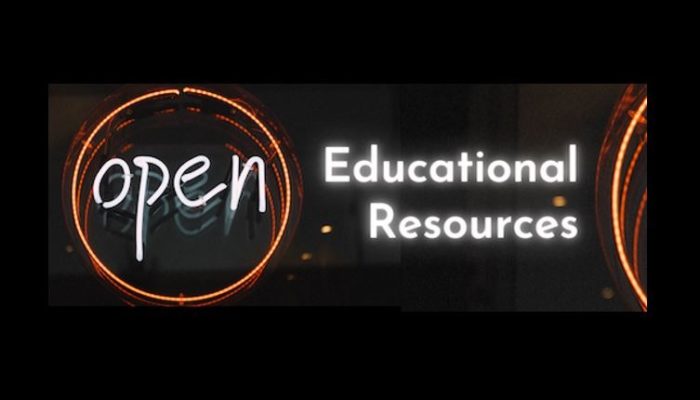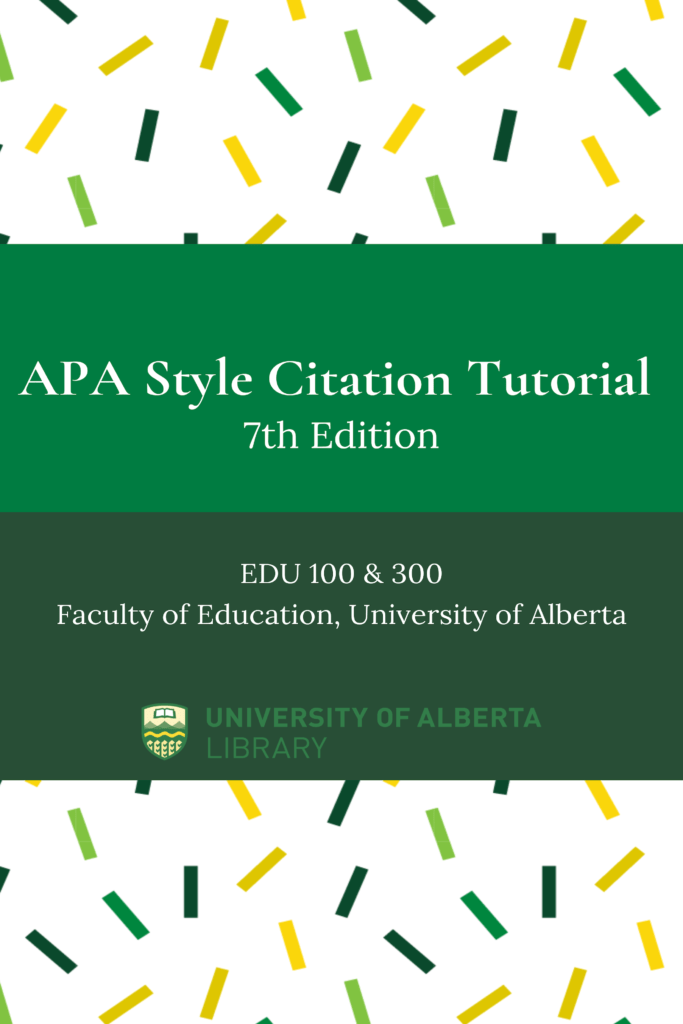Learn about the benefits of constructing a multi-year internship from a MLIS student's perspective.

APA tutorial take two: The benefits of OERs and Pressbooks across sectors
By Sarah Adams, Debbie Feisst, Michelle Brailey, and Alissa Droog
This is the second installment of a two-part article. Part I introduced the APA Style citation tutorial as a new open educational resource (OER) available to use and adapt. Part II takes a step back and focuses on the importance of OERs, using Pressbooks to create the tutorial and helpful resources, as well as the relevance of this work across sectors.
In our previous article, we discussed how open educational resources (OERs) are a way that educators and librarians can develop and share their teaching and learning resources collaboratively, because we may be instructing or providing resources on similar topics to meet the needs of our students and faculties. By jointly developing resources and providing access to them, we could save time and produce materials that are effective teaching and learning tools.
Educators and librarians are not the only ones benefiting from the creation and use of OERs. Students also benefit from the use of these resources. When they are used in the classroom, OERs may decrease cost and access barriers for students and they can be tailored to more closely align with course content than traditional course resources.
The following video is a good introduction to the benefits of OERs for faculty, librarians and students. How Can OER Help Educators?
“How Can OER Help Educators?” by The Council of Chief State School Officers is licensed under CC BY 4.0
OERs and the Five R Framework
The flexible and adaptable nature of OER materials ensures that these resources can be retained, revised, remixed, reused and redistributed by many users—otherwise known as the “5R activities”. The APA tutorial project utilized these unique OER qualities and ensured that we had a final product that can be built upon and changed over time to meet the needs of a variety of students. The SPARC OER Leadership Program or the OER Toolkit is a good place to start learning more about OERs.
OER platforms: Pressbooks, the APA tutorial and learning resources
The UAlberta Library APA tutorial is just one of many OERs that are available to be used and adapted. We chose the Pressbooks open source digital publishing platform to develop this OER, but it’s just one of many tools that can be used to create OERs. Pressbooks is widely available to Alberta post-secondary institutions through the Open Education Alberta program, a no-fee publishing service for open textbooks and other open educational resources. Pressbooks is also available through other organizations across the country, such as BC Campus, ECampus Ontario and University of Saskatchewan.
 Pressbooks allows authors to create ebook content that can include images, videos, and even interactive materials like quizzes using the H5P plugin. The interactive activities and embedded exit survey in the tutorial were created using the H5P plugin. In line with the concept of OER, authors can develop their resources over time, and easily add collaborators to contribute to their material, a process which aligns with the fundamental premise of open educational resources.
Pressbooks allows authors to create ebook content that can include images, videos, and even interactive materials like quizzes using the H5P plugin. The interactive activities and embedded exit survey in the tutorial were created using the H5P plugin. In line with the concept of OER, authors can develop their resources over time, and easily add collaborators to contribute to their material, a process which aligns with the fundamental premise of open educational resources.
Pressbooks is an easy and intuitive tool to use, and there are publicly available resources available to answer your questions. BCcampus has a guide to self publishing OER, Pressbooks has a condensed 5-step guide to organizing book information, and a YouTube channel with helpful webinars and tutorials. If you want to know more about navigating the Pressbooks site, Pressbooks also has a basic overview. Our recommendation for learning to use Pressbooks is to jump in and experiment. The more you create and experiment with content, formatting and plug-ins, the more confident you’ll be using Pressbooks.
Poll: Does your institution use Pressbooks? If so, for which resources (Tutorials, Monographs, Textbooks, Other) If not, a free account is available at Pressbooks.com.
OER partnerships
Another aspect of the success of this tutorial, and of OER in general, is the importance of partnerships. Partnerships take advantage of three out of five R’s of OER: revise, remix and redistribute. For the APA tutorial, we took inspiration from the library team at NorQuest College, which published its set of APA tutorials as OERs available via Creative Commons licensing. With access to this resource, we were able to reduce our workload when creating these tutorials. Now that the APA tutorial is available, we hope that others will use, revise, remix or partner with us to build upon what we’ve done.
Conclusion: Don’t reinvent the wheel
As librarians, we can work together to build resources. As public and academic libraries, we have a lot of the same goals. We want people to find good quality information and to evaluate the information they use. Since we have these goals, let’s use OER to help each other by sharing the work we do and save each other time.
Sarah Adams is currently looking for new opportunities, and previously worked as a Sessional Librarian at the University of Alberta with a specialization in Education. (sadams2@ualberta.ca)
Michelle Brailey is a Digital Initiatives Projects Librarian. She supports services for open educational resources at the University of Alberta Library. (brailey@ualberta.ca)
Alissa Droog is the Education & Social Sciences Librarian at Northern Illinois University, and previously worked as the Digital Literacies Resident Librarian at the University of Alberta. (adroog@niu.edu)
Debbie Feisst is a Librarian at the University of Alberta with a specialization in Education & Humanities. (debbie.feisst@ualberta.ca).
Contact us at: library.publishing@ualberta.ca


